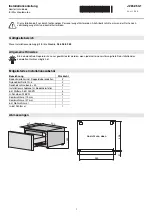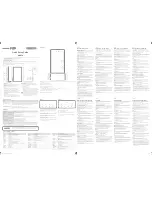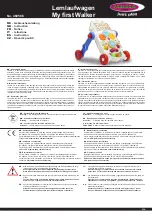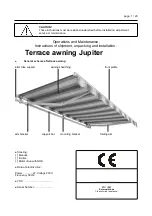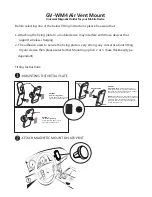
Long Range Mount Installation
¤
2005-2010 SR Research Ltd.
57
side of the eye-to-be-tracked. Ideally, the surface area of the projection screen should be much
larger than is required so that even with the Screen Mount attached to the center of the screen,
the screen can be slid to the side (moving the eye monitor off to the side with it) while still
allowing the entre display projection to land on the screen surface. This makes for easy
positioning of the eye tracker with the ability to switch between the eye-to-be-tracked
monocularly (such as with the Siemens 32 channel head coil) by simply moving the screen. The
alternative is to loosen the mount holding the eye tracker to the screen and physically move its
position beneath the screen.
7.9.1.3
Desktop Base (all scanner types)
The Desktop Base is simply a modified version of the Desktop Mount’s ball joint base, made
without ferromagnetic materials. It provides a quick and easy way to hold the Mounting Bar in
position for fast setup of the eye tracker. The drawback is that it may not be as easy to keep in
position between subjects as the more specialized mounts that are also fixed in position.
Though other mounts may be preferable as they are customized to particular scanner
environments, the Desktop Base is often useful as it can be used in the MRI environment and
is very amenable to testing different eye tracking configurations. Simply position the Desktop
Base with the Mounting Bar attached outside the bore on top of something sturdy with no
ferromagnetic content – such as a stool or table from within the MRI room.
For binocular recording the Desktop Base and Mounting Bar should be centered at the end of
the bore. For use with head coils that provide visual obstacles when viewed directly from
behind (e.g., the 32 channel Siemens head), the Desktop Base needs to be as far over to the
side as possible with the Mounting Bar tilted on an angle so that neither the Camera Head nor
Illuminator are blocked by the bore. The same principles apply as with the regular mounts – if
the subject has a clear line of sight to the Illuminator and the Camera Head then tracking is
possible.
7.9.1.4
Short Bore Mount (Siemen’s Allegra)
A special mount has been created for short bore scanners such as the Siemen’s Allegra that
goes into the bore. The Camera Head and Illuminator are seated on the bottom of the bore
pointed straight up at a “hot mirror”. The hot mirror reflects infrared light while passing light in
the visible spectrum, thereby allowing the subject a clear view out the back of the bore. The hot
mirror reflects the image of the eye from the head coil mirror to the Camera Head while also
reflecting the infrared from the Illuminator to light up the eye.
Given the limited space in the bore there is really only one place for the mount, though the
Camera Head and Illuminator, mounted on a dowel, can have their angle adjusted.
The Allegra Mount supports monocular eye tracking only.
7.9.2
Mounting the Camera Head and Illuminator
After determining the mount to use, it is time to begin assembling the components. Based on
the mount, head coil and whether or not to track binocularly, decide which side of the
































